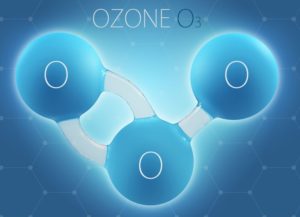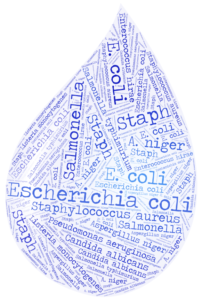As the pressure for making sustainable change on higher education campuses continues, the question becomes: of the many initiatives for sustainable change, which are the fastest, easiest, and most effective solutions–that also offer a visual impact at little-to-no cost increase? Many ideas for sustainable change check multiple boxes–but few ideas check all the boxes.
One of the best ways to dramatically increase sustainability in higher education, while also lowering carbon footprint, is simple: eliminate traditional cleaning chemicals. Cost-neutrality or even cost savings can be achieved by eliminating the multiple types of toxic cleaning chemicals used across higher ed campuses. Replacing toxic cleaning chemicals with easy-to-use technology that produces safe, sustainable aqueous ozone onsite, on-demand and with virtually no ongoing replacement costs is a simple, fast, and effective path to sustainable change in higher education. Institutions like Stanford University, University of Wisconsin/Madison, UCLA, UC Davis, Ball State, and many, many more have eliminated literally hundreds of thousands of gallons of toxic chemicals from their campuses, and replaced the chemicals with a naturally-occurring solution that cleans, sanitizes, disinfects and deodorizes simply, safely, and with no negative health impacts.
Lightning in a Box
 Imagine for a moment a spring storm replete with thunder and lightning. Visualize the bolts of light across the sky, cutting through the rain. Then recall the fresh, clean smell after the storm; the earth and sky literally smelling cleaner. This clean, fresh natural sense is the result of naturally-occurring aqueous ozone.
Imagine for a moment a spring storm replete with thunder and lightning. Visualize the bolts of light across the sky, cutting through the rain. Then recall the fresh, clean smell after the storm; the earth and sky literally smelling cleaner. This clean, fresh natural sense is the result of naturally-occurring aqueous ozone.
When electricity (in this case, lightning) runs through water (rain) at a high voltage, it transforms H2O temporarily into H2O3–or, aqueous ozone. H2O3 is a naturally-occurring cleaner, deodorizer, and disinfectant. It’s similar to what is produced when lightning runs through the rain; it helps explain why the air smells cleaner and fresher after a lightning storm; and it’s an answer to all the toxic, over-used, cleaning chemicals we use across our campuses every day–particularly post-pandemic.
 Generating and using aqueous ozone is a simple, safe, sustainable way to clean, sanitize, and deodorize through oxidation properties instead of toxic chemicals. Able to be created onsite and on-demand, aqueous ozone starts as H2O, is converted into a safe cleaner and a sanitizer as H2O3 for a period of time, and then reverts safely back to plain water. Aqueous ozone penetrates bacteria cells and damages them so they cannot reproduce. It is produced easily and quickly in large volumes through a wall-mount dispenser or for spot use from a hand-held dispenser. Best of all, aqueous ozone is widely respected and has been used for over 100 years around the world.
Generating and using aqueous ozone is a simple, safe, sustainable way to clean, sanitize, and deodorize through oxidation properties instead of toxic chemicals. Able to be created onsite and on-demand, aqueous ozone starts as H2O, is converted into a safe cleaner and a sanitizer as H2O3 for a period of time, and then reverts safely back to plain water. Aqueous ozone penetrates bacteria cells and damages them so they cannot reproduce. It is produced easily and quickly in large volumes through a wall-mount dispenser or for spot use from a hand-held dispenser. Best of all, aqueous ozone is widely respected and has been used for over 100 years around the world.
Aqueous ozone is Green Seal certified as a high-performing cleaner–both GS-53 and GS-37. It is also NSF-approved and NSF-white-listed as a food-contact and non-food-contact sanitizer. Aqueous ozone is documented in a long list of respected scientific journals for its germ-killing properties–including Salmonella, Listeria, Canine Parvo, and much more. Its effectiveness against SARS-Cov-2, the virus responsible for COVID-19, has been documented.

An award-winning program to replace toxic chemicals with aqueous ozone has been in place at Stanford University for several years now and documents the following about aqueous ozone:
- Elimination of germs, odors, and mildew;
- Quick killing of viruses and bacteria;
- More effective than Hypochlorite (bleach) without the negative side-effects;
- Carries no toxins, carcinogens, or chemical residues;
- Supports “zero waste” initiatives and reduces plastic pollution;
- Eliminates hazardous chemical waste disposal and their associated regulations;
- Eliminates the purchase, storage, management, and inventory control of chemicals;
- Releases no fumes from added chemical fragrances
Like Stanford, the 5th-large public school district in California converted from traditional toxic cleaning chemicals to aqueous ozone and has documented the following benefits:
- 90% less water usage compared to diluting and mixing chemicals;
- 83% less plastic packaging through the facilities department in the district;
- 76% less toxins (cleaning chemicals) in use in the district;
- 72% less cardboard packaging from shipping;
- 70% less chemicals of concern;
- 70% reduction in skin contact irritation and/or respiratory issues;
- 50% reduction in slip-and-falls from the elimination of chemical residue on floors.
In addition to these quantifiable hard benefits, switching from cleaning chemicals to aqueous ozone technology has resulted in soft benefits at these educational institutions like:
- Easier, safer, and faster new custodial training;
- Job satisfaction knowing the employer cares about employee health;
- Pride from enabling the use of technology in creating a cleaner, safer, healthier environment;
- Establishment of thought leadership and increased brand reputation from the adoption of technology;
The list of public and private organizations making a demonstrable impact in their sustainability efforts by eliminating cleaning in favor of cleaning technologies is long and full of eye-opening results. The adoption of aqueous ozone is an easy, fast, and effective way to make a noticeable change, increase sustainability, decrease carbon footprint, and have a little-to-no budget impact.
Eliminating toxic cleaning chemicals and embracing sustainable cleaning technologies is the right thing to do.
About the Author
Greg Valenti, the Director of North American Sales for Tersano, works with distributors and end-users in North America to show an alternative to traditional cleaning chemicals. His work focuses on demonstrating innovative cleaning technology that provides increased and sustainable cleanliness and hygiene for universities, schools, businesses and public spaces.